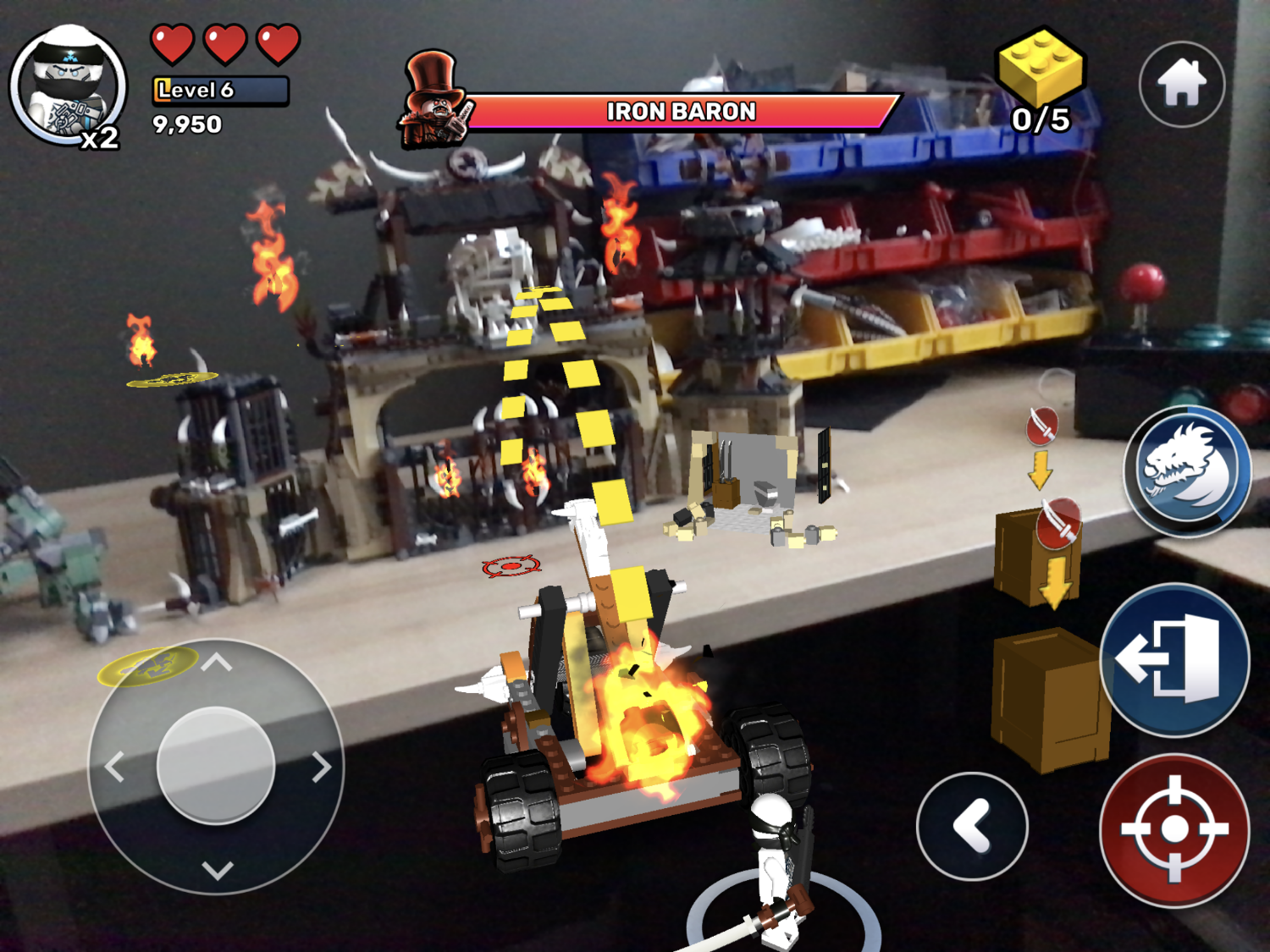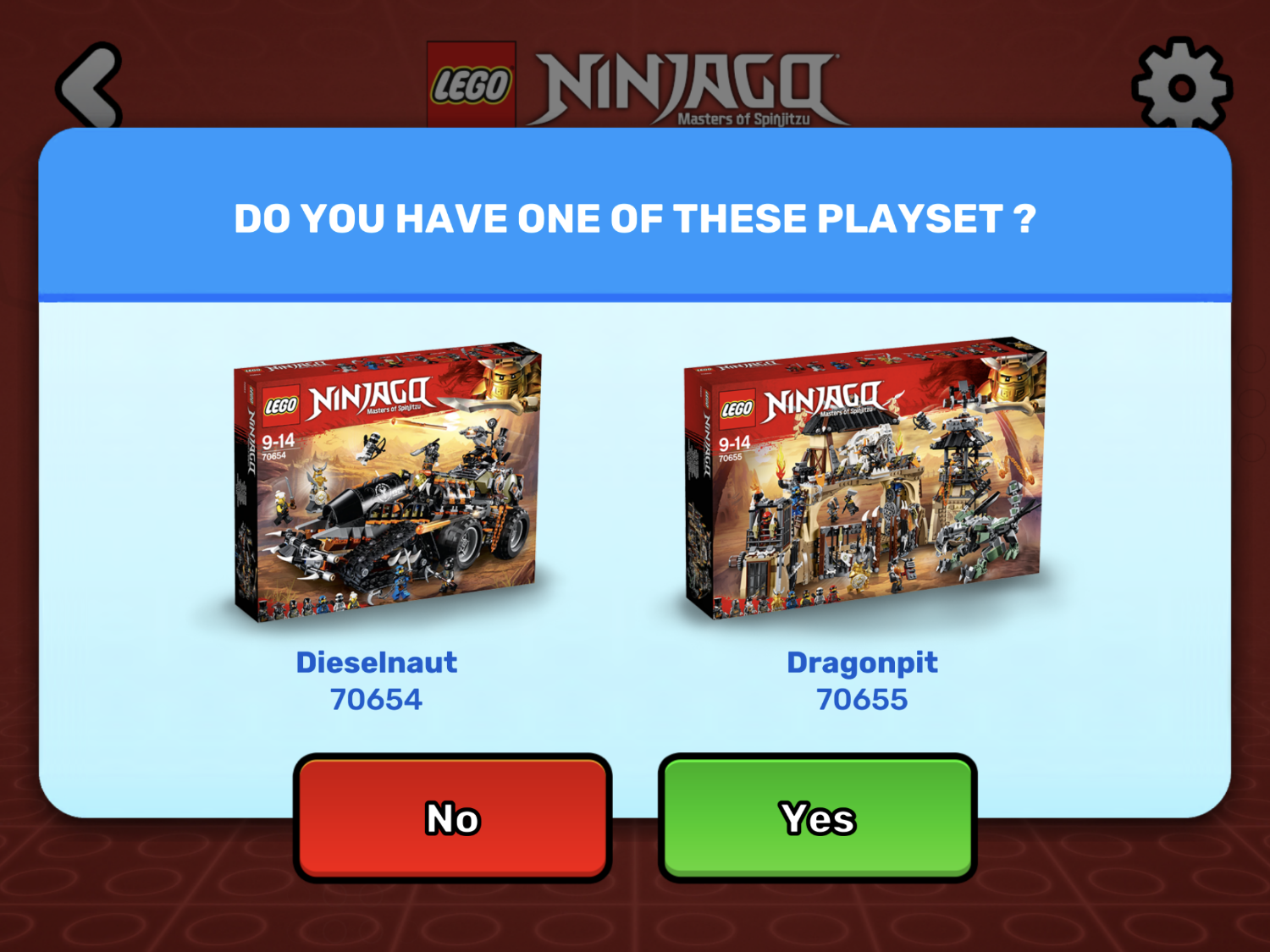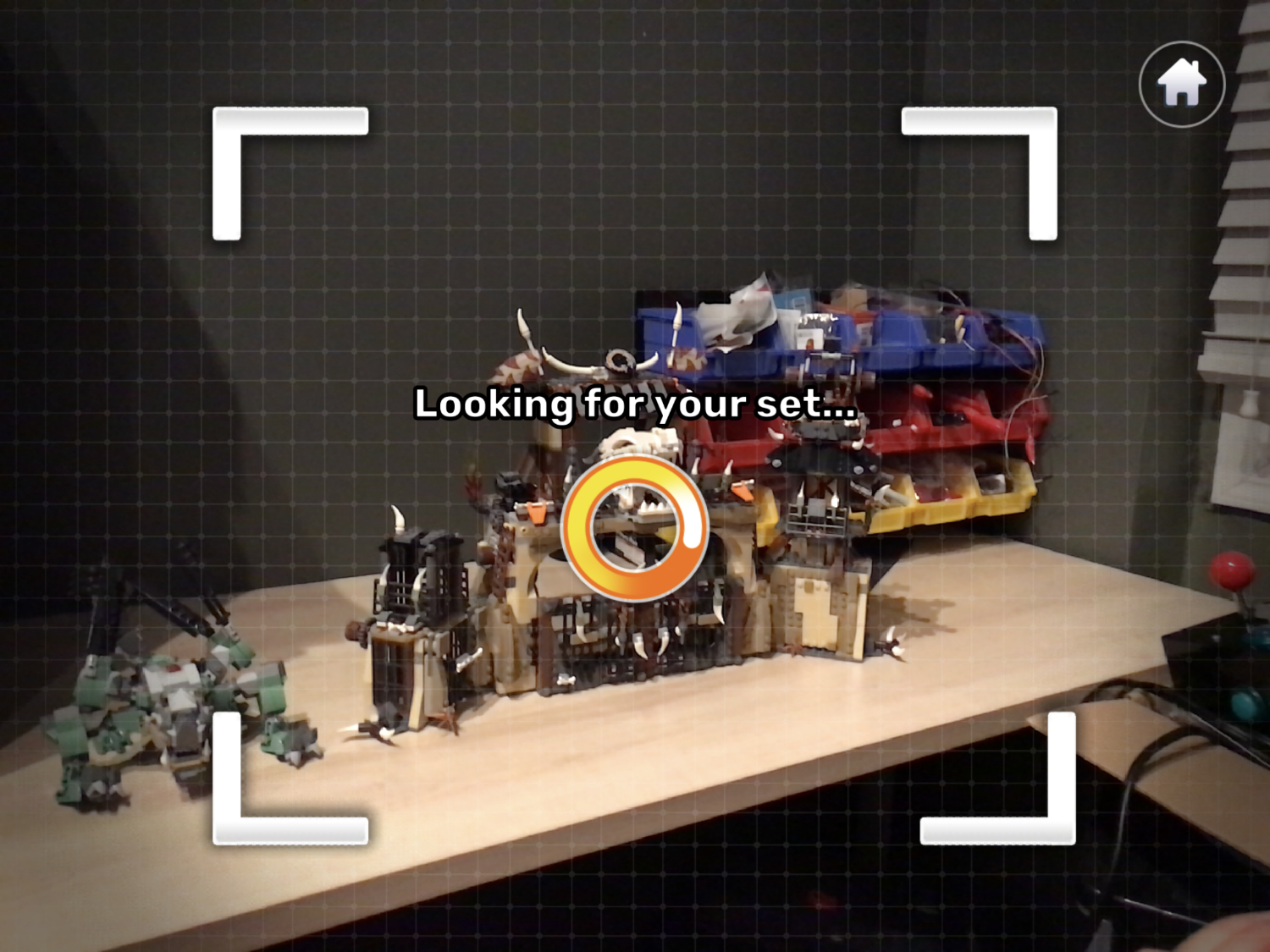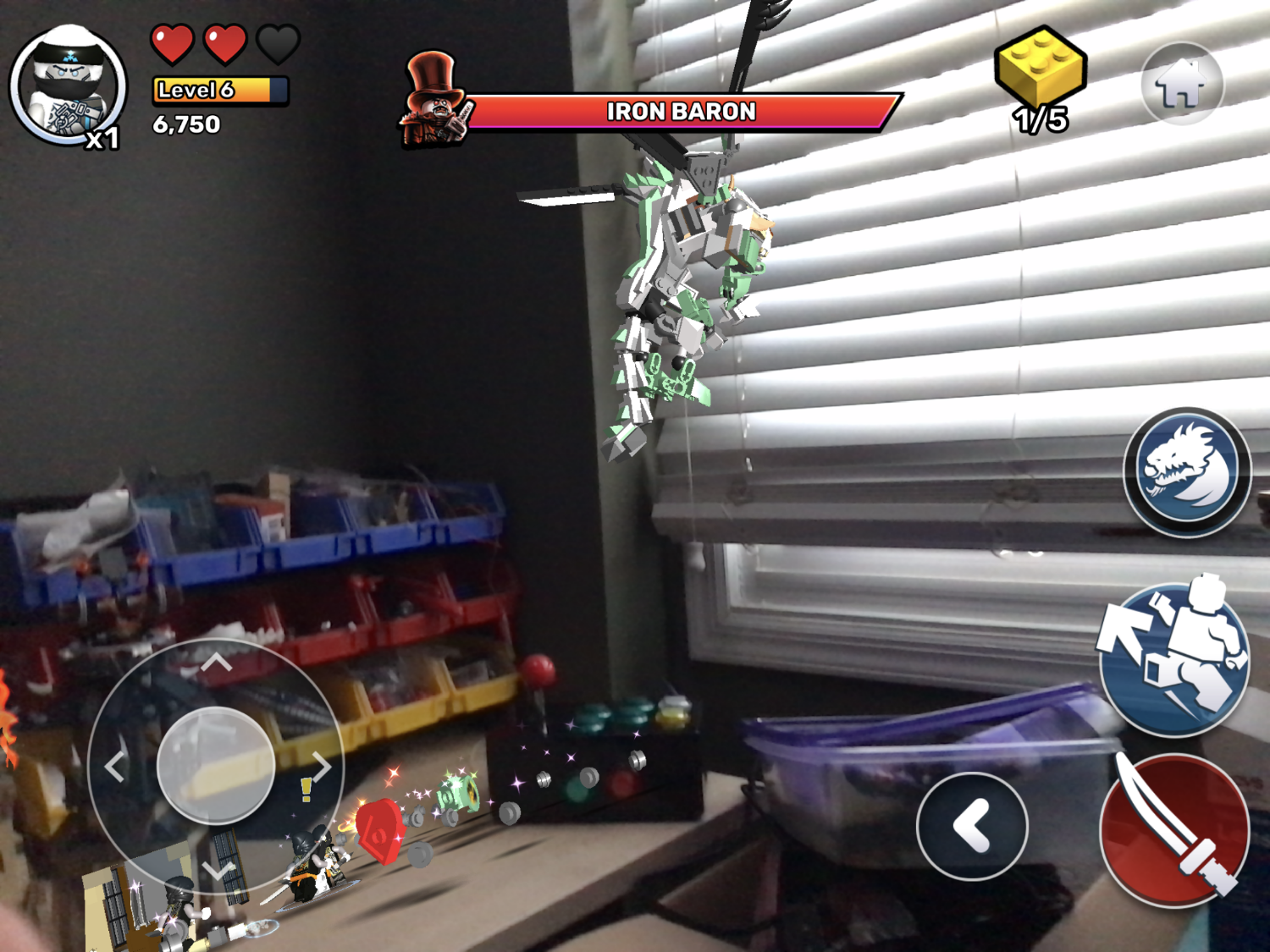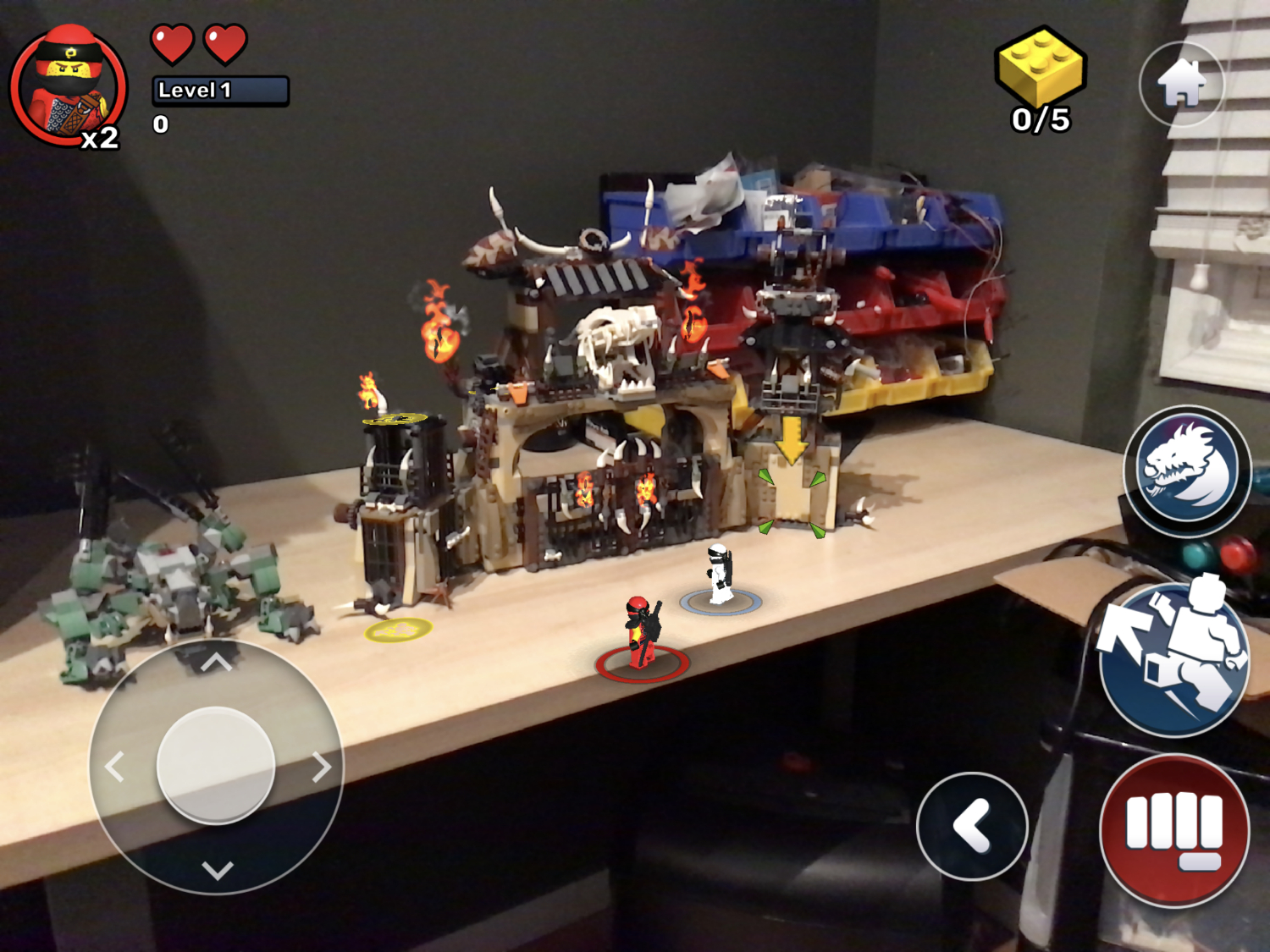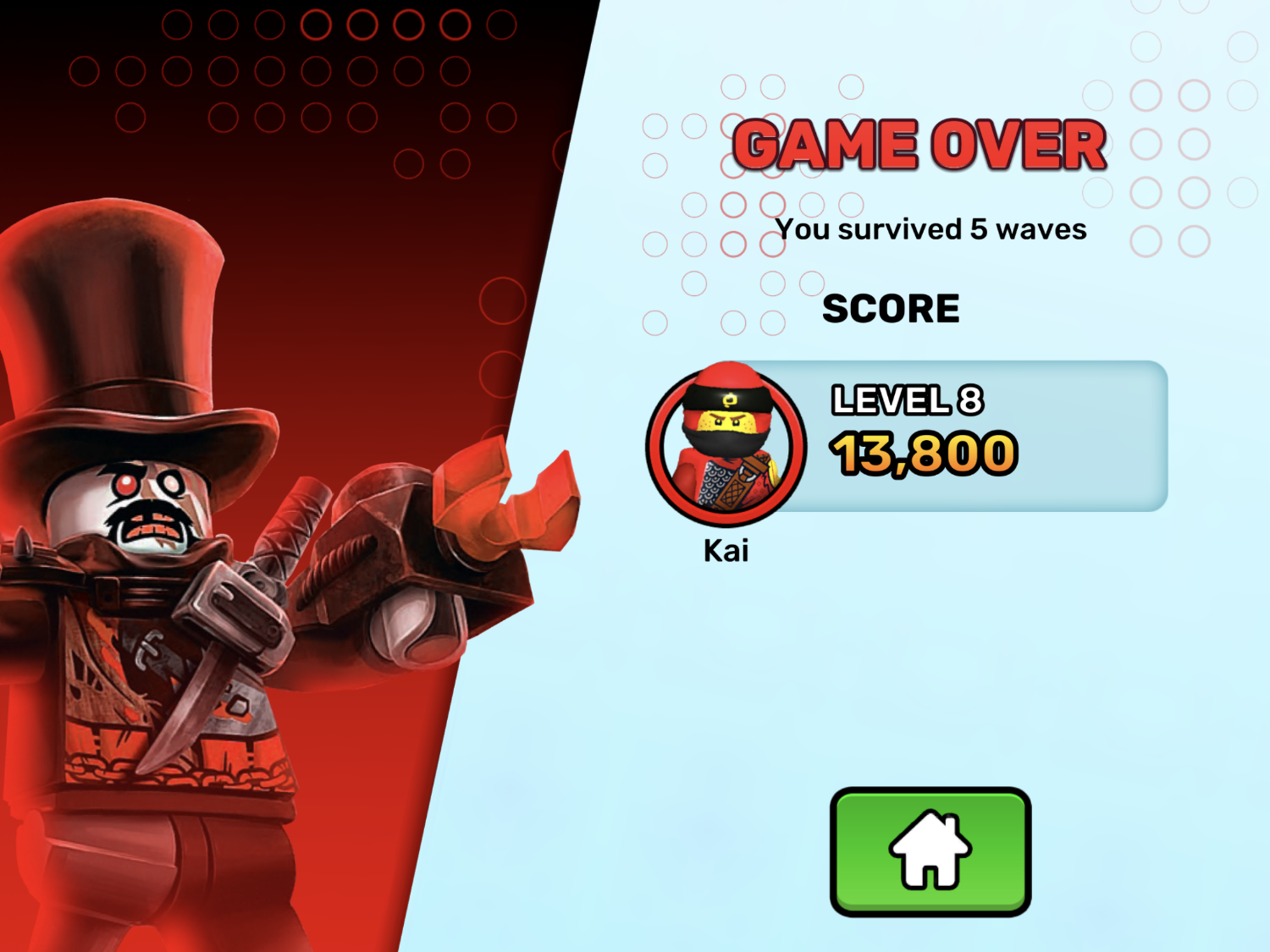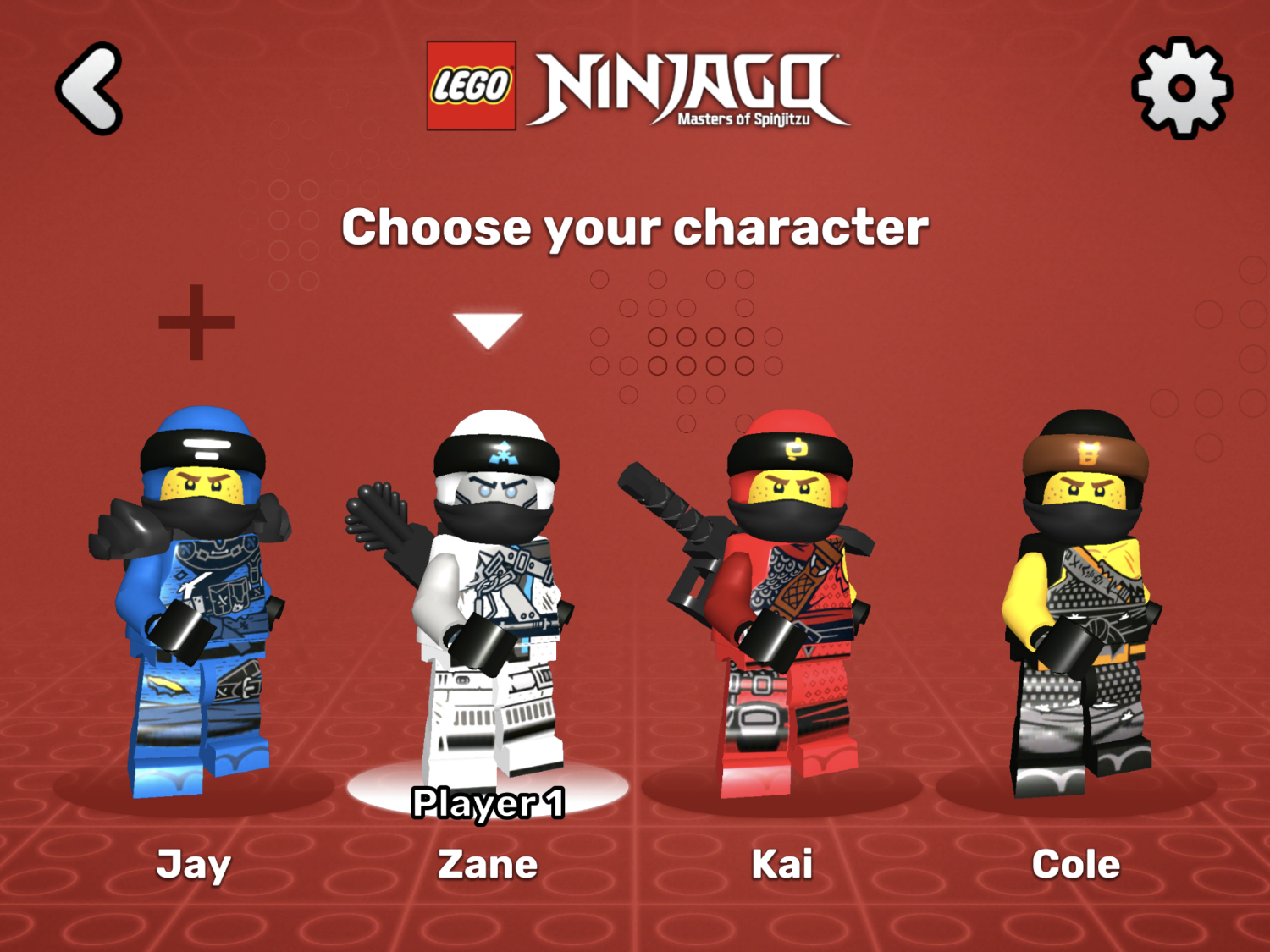Lego AR Playgrounds Hands-On: Great AR, Mediocre Gameplay
From its award-winning Boost and Mindstorm robotics to its suite of engaging video games, Lego is a leader when it comes to pairing toys with tech. Last month, the company took a major step into the augmented reality space, unveiling Lego AR Playgrounds, a mobile app that allows you to play video games using real Lego buildings and everything in your room as a backdrop.
The first and only use for Playgrounds so far is a Ninjago-themed fighting game that works with one of two current Lego sets, Lego Ninjago Dragonpit and Lego Ninjago Dieselnaut. After several hours of building the Dragon Pit and a few false starts where the software didn't recognize the set, I was able to sit down for a play session and was impressed with the quality of the AR rendering, but the game play itself leaves much to be desired.
Lego AR Playgrounds relies on Apple's ARKit technology, which works really well here and allows an intriguing two-player mode, but it also limits the audience to iPhone and iPad users only. Hopefully Lego will find a way to bring this experience to the more than two billion people who use Android.
When you first launch the app, you're greeted by a screen which immediately asks if you own one of the two supported Lego sets. If you say "No," you can still play up to five levels of the game on any flat surface in your home; this free feature worked well on any table I tried it on.
Scan and Scan Again
However, when you say "Yes," the app asks you to hold your tablet / phone so it scan the Lego set. And, if you've placed your Lego set on a dark surface, there's not enough light in the room or you don't have steady hands, you're going to have problems.
For the first few weeks after Lego sent me a sample Dragonpit set, I couldn't get the app to recognize it, no matter what I did. I tried it on my living room coffee table, I tried it on the floor and I tried it on my dining room table. I even moved the coffee table to a different location in my house so it would get more light.
However, when I put the Dragonpit castle on the blonde wood desk in my home office, I was finally able to scan it with the Playgrounds AR app and have it recognized. According to Lego, the color of the surface matters a lot and having put it on a black wood table, a cherrywood table and a shiny hardwood floor probably caused issues.
Get Tom's Hardware's best news and in-depth reviews, straight to your inbox.
Annoyingly, AR Playgrounds wants to rescan your set every time you launch a new game, launch the app or unpause a game. If you have your Lego set on a light-colored surface in good lighting, you should be able to scan the Dragonpit quickly, but I often had to move the camera around for 10 or more seconds to get it to recognize my build. My six-year old had a lot of trouble holding the iPad Pro or the iPhone XS still enough to get it to work and I usually had to help him.
AR Experience
After the scan recognizes your set, the AR experience is compelling. You control one of four Ninjago characters (Zane, Kai, Cole or Jay) and fight a series of bad ninja thugs while taking on the Iron Baron, a big boss bad guy who sits at the top of the tower.
The object of the game is to defeat the baddies on each level and keep advancing. Just as in a typical Lego video game, there are studs, weapons and gold bricks to collect along the way. You can even build objects, such as a catapult, out of virtual bricks.
The characters can roam anywhere in your room, though they cannot fall below the plane of your desk. In my fights, I sometimes moved my character in front of the storage bins that sat on the right side of my desk or over near the bookshelves and the program stayed with me. At one point, a dragon even appeared to fly around my room. At another point, I punched in a virtual wall on the castle to reveal a sword.
I was really blown away by the way the app changes your perspective on the virtual characters based on your position. If I moved closer to the characters, they would look larger. If I stood up when I had been sitting down, I'd see them from the top down. And, if characters were outside my field of view, I would see them again when I pointed the iPad camera at their positions. In short, it was very lifelike.
The Dragonpit set isn't just a passive background; your virtual characters can jump onto its ledges, shoot fireballs up to the top ledge where the Iron Barron stands and break a virtual wall to reveal a weapon. The app also adds some colorful fire effects that make it look like the torches on the building are lit.
Two Player Mode
You can play two-player if you have two iOS devices on the same network, but you better make sure that both players can scan the Lego set effectively and that neither one ever accidentally hits the home or power button while playing. Player one cannot start playing if player two hasn't also scanned the playset and, if either one accidentally exits the app or puts their device to sleep, all play pauses until that player rescans the set.
Another annoying feature is that if a player dies, they can't rejoin the game. There are no continues. That problem isn't just limited to two-player games either. Once you lose your last life, the game is over and there's no way to save your progress. You start from the beginning every time.
Gameplay
The game is fun, but the fact that you can't save progress and that you have to start all over again when you die is a real downer. My son and I enjoyed playing in both one and two player modes, we appreciated the ninja combat and the the ability to get extra weapons or power-ups such as the ability to summon the dragon by breaking virtual loot boxes. However, we could never get higher than the seventh level. After a while, doing the same levels over and over again becomes frustrating, particularly for a game aimed at kids.
It was also hard to avoid taking damage during combat, which was all sword or hand-to-hand. So, in short, it's easy to die and hard to advance past a certain level.
In the Ninjago world, each of the main ninjas has special powers: Zane shoots ice while Kai shoots fire, for example. However, I never found a way to use my ninja's elemental powers in the game. Perhaps that capability was on one of the levels I didn't reach.
If you think of it as a game, the current version of Lego AR Playgrounds isn't going to keep you occupied for long. However, if you think of it as a tech demo that shows what's possible, you will likely be impressed.
If you were going to buy (or already own) Lego Ninjago Dragonpit or Dieselnaut, then having this AR game is a cool extra, but I wouldn't buy either set in order to use the app. Besides, you can experience the first five levels for free.
In the future, hopefully, Lego will add Android support and make a more compelling game. For now, I'd just settle for a title where I could get to the eighth level.
Avram Piltch is Managing Editor: Special Projects. When he's not playing with the latest gadgets at work or putting on VR helmets at trade shows, you'll find him rooting his phone, taking apart his PC, or coding plugins. With his technical knowledge and passion for testing, Avram developed many real-world benchmarks, including our laptop battery test.
-
c4v3man It sounds like the 2-player mode is co-operative, not versus, as such having the ability to "level up" your character each time you play would solve the "unable to reach higher levels" issue, by making you stronger/more resilient to damage each run. Eventually you would become powerful enough to easily beat the game, at which point an option could be presented to play "hard mode" or "Batman" or something to make the game more challenging again, if you wanted to replay from there...Reply -
c4v3man And the lack of Android compatiblity makes a lot of sense on a complicated game like this. Legos are a reliable, and simple toy that can be used in complicated ways. Saying "iphone 8 or newer required to play AR experience" is a lot easier than saying "Pixel 2/2XL,Pixel 3/3XL, Samsung Galaxy S8, S9, Note 8, Note 9, LG V35, Oneplus 6/6T, Huweixxx..."Reply
I don't own any iOS devices, and Google's got some excellent tech, including Project Tango, which would theoretically make "scanning for the set" reliable and fast in more environments. But at the end of the day, there's too much diversity, too little consistency, to offer this kind of experience in a retail-friendly experience. -
bit_user Reply
Well, they could just say it requires a phone that supports AR Core. Then, you can check with Google whether your phone supports AR Core.21705821 said:And the lack of Android compatiblity makes a lot of sense on a complicated game like this. Legos are a reliable, and simple toy that can be used in complicated ways. Saying "iphone 8 or newer required to play AR experience" is a lot easier than saying "Pixel 2/2XL,Pixel 3/3XL, Samsung Galaxy S8, S9, Note 8, Note 9, LG V35, Oneplus 6/6T, Huweixxx..."
I don't own any iOS devices, and Google's got some excellent tech, including Project Tango, which would theoretically make "scanning for the set" reliable and fast in more environments. But at the end of the day, there's too much diversity, too little consistency, to offer this kind of experience in a retail-friendly experience.
As for Project Tango, it's dead. Google killed it nearly a year ago. AR Core still hasn't caught up. Without a true depth sensor, I'm not sure it can. -
bit_user I think it's great that Lego is embracing AR. Hopefully, this is just the start. I mean, how cool would it be if you could scan your Lego creations, and then see them in full size - either by looking through your phone, or in VR?Reply
